Old-fashioned Meyer lemon marmalade is made with little more than lemons, sugar, water and time. The result is a vibrant citrine-hued marmalade with a perfect balance of sweet and tart.
Meyer lemons, a cross between traditional lemons and mandarin oranges, have a sweeter flavor that makes them perfect for marmalade (it’s definitely one of my favorites).

When life (or in this case, your lovely Auntie) gives you lemons…
… make marmalade.
Ok, and maybe some lemonade too. And preserved lemons. And lemon bars. And lemon curd. And lemon poppyseed muffins. And… (she really did send me a TON of lemons).
Luckily I’ve got a wealth of Meyer lemon recipes to choose from.
Still, I couldn’t resist putting this perfect, untreated fruit to work in a batch of good old-fashioned marmalade.

This is an old fashioned marmalade recipe, meaning it does not have any added pectin.
What it does have is quite a bit of sugar.
I know 3 1/2 cups seems like a lot, but please don’t try to reduce the sugar in this recipe. I won’t get into the science of it, but having the proper concentration of sugar is what allows the pectin to activate and the marmalade to form a proper gel.
I know it might seem like reducing the sugar will result in a less-sweet jam, but the point at which a marmalade ‘sets’ is when the sugar concentration reaches a certain percentage (typically 60-65%). If you reduce the sugar, you’ll either end up with a runny jam, or you’ll have to cook the jam for a longer period of time, essentially evaporating off more water until you end up with the same concentration of sugar as if you used the full quantity of sugar to begin with. So unless you want to spend more time to get a smaller quantity of the same thing, please use the full quantity of sugar as written.
I’d also argue that the sweetness is necessary to offset the tart and bitter notes of the citrus, much in the way sugar is pretty much a requirement for lemonade (drinking straight up lemon juice is anything but pleasant). In the case of marmalade sugar also works as a preservative, maintaining the stained glass-like color of the citrus for a much longer period of time.
That said, I do have some lower sugar marmalade recipes here as well as a few in my ebook which use Pomona’s pectin (this particular kind of pectin is designed to react with calcium, not sugar, so you can reduce the added sugar in jams by a significant amount without affecting the final set). I do find that these lower-sugar preserves, marmalade especially, do tend to darken in color over time, much more noticeably than the old fashioned kind.
Want to see the whole step by step process? I documented the entire marmalade-making procedure last weekend in my Instagram Stories, and saved to my highlights. Because sometimes it’s easier to see a recipe made to fully understand just how it works.
Also be sure to click through/scroll down to get the FREE printable labels I’ve designed just for you. :)

The hardest part of making homemade marmalade is probably the prep.
There are a number of different ways to prep your citrus, the difference will determine the final texture (how chunky the pieces of peel are) as well as the final yield (recipes where you just use the thin outer layer of peel will have a much lower yield than recipes that use the full fruit).
For this recipe I wanted to make my precious lemons go as far as possible, so I opted to slice the full peel into super thin strips.
For Meyer lemons this works pretty well, since the pith isn’t particularly bitter, but for a more bitter fruit like bitter oranges or grapefruit this method might not be ideal.
I still sliced off any big pieces of pith, removed the seeds, and pressed out a bit of the juice from each piece so they’d be easier to slice, and so I wouldn’t waste as much juice.
Be sure to save any seeds or pith you remove—I gather it all up in a cheesecloth bundle. These scraps are super high in pectin, so even though we don’t want them in our final jam, we want to extract as much of that valuable pectin as possible to ensure a good set.

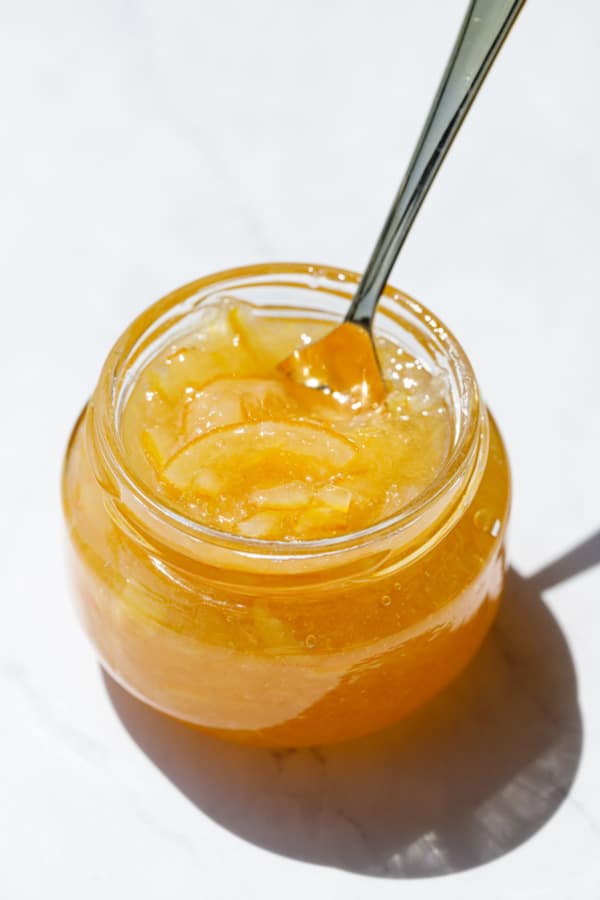
Can you use other citrus here?
Certainly, although the unique sweetness of the Meyer lemons is particularly suited to marmalade. I wouldn’t recommend using all regular lemons, the resulting jam would be much too sour. If you want to make lemon marmalade and don’t have Meyer lemons, throw in an oranges or two to help balance out the tartness (and since Meyer lemons are actually a cross between lemons and oranges, the final result will have a similar flavor). As long as the total prepared quantity of fruit is the same, the recipe can still be followed as written.
Orange marmalade can be made with a similar process, but I do recommend supplementing them with a few regular or Meyer lemons, again, to help balance out the flavors. Bitter oranges are hard to come by, but they make for a truly classic marmalade, and I can personally attest to the amazing marmalade that results from Blood oranges (my personal favorite). Cara Cara oranges are pretty rad as well.
But overall, the proportions of fruit to water to sugar are the same no matter what kind of citrus you use.


Can you halve/double this recipe?
You can definitely halve it if you only have a few lemons (although I’d argue that you’re putting the same amount of time into it, you may as well get more than a couple jars from all that work!)
You can also double this recipe, using up to 3 pounds or 6 cups of prepared fruit. That’s only because this is already a small-batch recipe (most recipes you see call for at least 2-3 pounds of fruit to start with). For every 1 cup of prepared fruit, use 1 cup filtered water and a little over 1 cup (233g to be exact) of sugar. Keep in mind your cook times will be significantly longer as well.
That said, you CANNOT scale this recipe up further. Too much fruit and the marmalade will take far too long to come to temperature, and pectin will essentially break down if cooked for too long, resulting in a runny jam and an overcooked flavor.
If you want to make larger quantities of marmalade, you can prep and steep your fruit altogether, but then split it up into 2 or more saucepans when it comes time to cook it (weigh out the fruit so each pan gets an equal amount). This way it will still come to temperature in a reasonable amount of time.

What jars should I use?
I used non-traditional canning jars here with one-piece lids (the kind you’d find on commercial jams and jellies). Specifically these 140mL jars with gold lids, which hold a little over 4oz each.
For those just starting out, I recommend sticking to typical two-piece lids, as it is much easier to tell when a jar has sealed properly (you’ll hear the audible ‘pop’ of the lid when the jar seals, which is oh so satisfying). I’d suggest these small 4-ounce jars for marmalade, since who can feasibly eat 8 ounces of marmalade in a week or two (maybe you can, and if so, you can definitely use larger jars). Personally I don’t eat a ton of jam or marmalade (go figure), so I always prefer smaller sized jars to reduce waste.
Once opened, marmalade should be refrigerated and used within 2 weeks.


New to canning?
I know we’re all stuck at home, looking for things to do. And this would be a perfect time to learn to can!
However, if you’ve never canned before, I probably wouldn’t recommend starting with marmalade. It’s definitely the most labor intensive and finicky of all the preserves. That’d be like wanting to learn to sew and jumping right in to make a pair of jeans (which, ironically, is exactly what my husband tried to do. Luckily I talked him into at least making an apron first. Although from there he went straight to dress shirts so…)
If you’ve never canned before, I recommend starting with a simple strawberry jam recipe with added pectin. Adding powdered pectin takes the guesswork out of preserving—you don’t have to worry about time or temperature or proper proportions of sugar to fruit. And for a beginner, having initial success when you just start out is so important. Keep at it, and before you know it you’ll be slicing that citrus like a pro.
Better yet, check out my seasonal ebook series, That’s My Jam. it’s got upwards of 40+ recipes for seasonal jams, jellies and marmalade, most are easy enough for a beginner to tackle! (And psst! Use coupon code MARMALADE for 15% off today!)
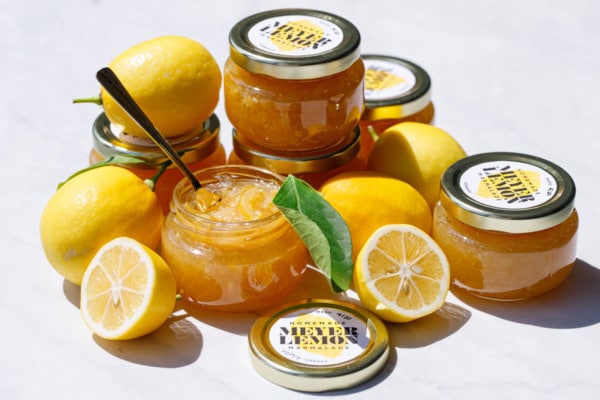
Old-Fashioned Meyer Lemon Marmalade
Old-fashioned Meyer lemon marmalade is the perfect balance of sweet and tart, made with little more than lemons, sugar and time.

Ingredients:
- 1 1/2 pounds organic Meyer lemons (about 8 medium-sized lemons), washed and scrubbed
- 3 cups filtered water
- 3 1/2 cups (700g) granulated sugar
Directions:
- Wash and scrub lemons with hot water to remove any coating waxes (if you can find organic, untreated lemons, they’ll make the best marmalade). Blanch lemons in boiling water for 30 seconds (this will help soften the peels and release the juices).
- Line a small bowl with cheesecloth. Set another medium sized bowl or 4-cup glass measuring cup on your work surface.
- Cut off ends of lemons and stand vertically. Cut vertically into quarters. Slice off big chunks of membrane in the center. Pop out any seeds using your finger or the tip of a knife. Working over a bowl to catch any juice, run your finger down the lemon, between the membranes. Sometimes, if your citrus is ripe, you’ll be able to almost peel the pieces of membrane from the the flesh. You don’t have to worry about getting it all out, but less membrane and pith will yield a less bitter marmalade.
- Place any seeds and pieces of pith and membrane in the bowl with the cheesecloth (these are valuable sources of pectin and you don’t want to waste them!)
- Thinly slice the remaining lemon peel as thinly as you can. Place sliced peel into measuring cup along with any juices from your cutting board (using a cutting board with a juice groove is helpful here!).
- Repeat with remaining lemons, reserving all seeds and pieces of pith in the cheesecloth bowl.
- When you’re done, you should have about 3 cups worth of chopped peel and juices; if you have more or less, you’ll want to adjust the water and sugar quantities accordingly.
- Bring together ends of cheesecloth around seeds and pith, tie into a secure bundle. Nestle bundle into the bottom of a bowl, then pour chopped peel over top. Cover with 3 cups of filtered water, making sure the cheesecloth bag is fully submerged. Cover tightly and refrigerate overnight. (If you skip this overnight steep you’ll just need to cook the lemon peel longer to soften it and bring out the pectin).
- The next day, prepare canner and wash/sterilize your half-pint mason (or equivalent) jars. Keep jars in hot water until ready to use. Warm lids in hot (not boiling) water to sterilize and soften seal.
- Place two small plates into the freezer before you start.
- Pour the soaked fruit, all liquid and the cheesecloth bag into a large, non-reactive saucepan.
- Bring to a simmer over medium-high heat and cook, stirring occasionally, until peel is sufficiently softened (you should be able to cut it against the side of the saucepan with a rubber spatula with little resistance). I find Meyer lemons relatively soft, mine took only about 15 minutes here, but if your citrus is more firm it could take up to 45 minutes. The peel will not soften further once you add the sugar, so be sure you cook it sufficiently beforehand.
- Remove pan from heat. Remove the cheesecloth bundle with tongs and place in a bowl to cool slightly. Once the bundle is cool enough to handle, squeeze the bag over the saucepan, kneading and scraping the bag as necessary to release as much of the gooey pectin as possible. Discard bundle.
- Return saucepan to heat and bring to a boil. Add sugar, stirring vigorously until sugar is completely dissolved and mixture comes to a full rolling boil. If you have a probe thermometer, feel free to clip it to the side of your saucepan at this time. Otherwise, use an instant read thermometer to check the temperature every few minutes. Continue to boil, stirring occasionally, until the mixture reaches approximately 217-218 degrees F. We’re looking for a final temperature of 220 degrees, but you’ll want to start testing it a few degrees sooner just in case (and keep in mind if you are at higher altitudes, you’ll likely have a lower target temperature to account for varying boiling points—about 2 degrees for every 1000 feet above 3000).
- To test the set, drop a teaspoon or so of jam onto one of your frozen plates, and return to the freezer for 2 minutes. Push your finger through the dollop of jam. If it wrinkles up thickly in front of your finger, that’s a sign of a good set, and means your marmalade is ready. If it doesn’t wrinkle, cook it for another minute or two then test again.
- When marmalade is set to your liking, ladle it into sterilized jars, leaving 1/4-inch of headspace. Wipe jar rims and threads. Screw on lids and rings. Process in a boiling water bath for 10 minutes. Remove from water and let cool completely, 12 to 24 hours. Check seals. Any unsealed jars should be refrigerated and used within 3 weeks. Sealed jars will keep in a cool, dark place for up to 1 year.
Did you make this recipe?
Let us know what you think!
Leave a Comment below or share a photo and tag me on Instagram with the hashtag #loveandoliveoil.

Bonus Printable Labels
Homemade marmalade is perfect for gifting: complete the package with these vibrant printable labels!
I designed these round labels to fit the lids of most jars (and if you are using smaller jars or want hang tags, you can simply print them at a reduced size.
The downloadable PDF file contains 12 labels per page.
To use, simply download the printable file by completing the form below. Print your labels onto full-sheet sticker paper, cut out rounds, and apply directly to the (canned and cooled) jars.





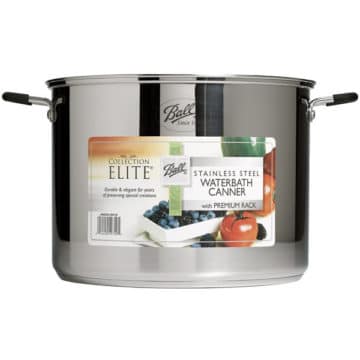




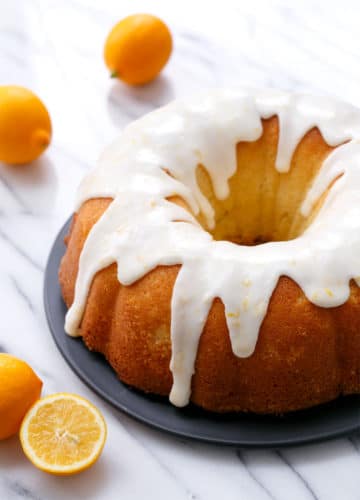


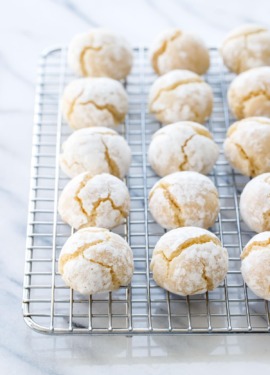




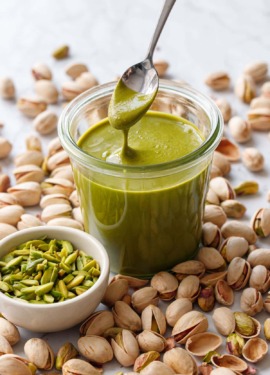
It’s a beautiful thing! Beat ever!.
I’m confused, perhaps I just missed it, but what do you do with the actual fruit? Is it just discarded?
Can this be jarred without going through the boiling/canning process or is that necessary to get the right consistency?
Yes it can, but it will need to be refrigerated as it won’t be shelf-stable for long term storage.
Can I make this for a diabetic using sugar substitute?
I just made this recipe with my husband and the final product is so bitter we can’t eat it. Did we do something wrong? We used the same ratios of meyer lemon to sugar.
Thanks, hoping to do better next year. Dina
Lemons can vary quite a bit as far as natural sweetness, also some lemons have much thicker layers of pith which can definitely affect bitterness (this recipe especially since it uses the whole peel). You may have better luck with a method that removes more of the pith, peeling of thinner slices of the outer peel with a vegetable peeler, for example, and then thinly slicing that. You’ll need more lemons to make up the same quantity of peel/juice though, but you may like the final result better.
You can also try soaking the peels longer, cooking it longer, or even blanching the peels for 5 or 10 minutes in boiling water, drain, then recover with water before soaking it overnight (the extra blanche step will help remove some of the bitterness too).
I have a home orchard with a Meyer lemon and a sour orange tree in it. Every year the Meyer lemon tree gives me a gigantic harvest and I am hard pressed about what to do with the fruit. Last year I made juice with all those lemons and still had tons to give away to my friends and family. In fact I froze all that juice over a year ago and my freezer is still packed with those jars. I have barely made a dent in the inventory. I don’t need any more lemon juice so this year I decided to try your recipe for Meyer lemon marmalade. I thought you could only do this sort of thing with sour oranges and I am planning to eventually make orange marmalade from those also but I have to wait for my sour orange tree to get bigger and give me more fruit. Well today I made your recipe with some lemons that were harvested from my tree. These were early ripening fruit as most of my fruit ripens in mid to late December. So I will have plenty more lemons in the next couple of months to do this again. I will tell you that the marmalade taste just like the sour orange marmalades I have tried in the past. In fact but for the color of the peel which is yellow instead of orange you would not be able to tell the difference. It was great news to learn that I could use your recipe to make other citrus marmalades. I happen to have lots of Tangelo trees in my garden also and I think they would be a great candidate for this recipe! Cheers!
I made this recipe and absolutely loved it! Thanks for sharing and for the detail. I’ve never made jam/jelly before but carefully followed the directions and I love the final product. I am lucky to have have a surplus of lemons, so I used extra seeds for more pectin and a good gel.
Reading the directions I’m unclear about the actual fruit portion of the lemons…. include or not ?
Yes, the flesh it gets chopped up along with the peel, however it pretty much falls apart during this process so you’ll really only see the sliced peel pieces and juice.
ooh this looks absolutely beautiful! love the labels too. nothing nicer than chunky marmalade! cheers and hope you’re keeping well during the crisis
sherry
great idea adding labels for gift giving, great marmalade, I love lemon flavored almost anything, made me think what the most common, default marmalade is, I guess it’s orange, I prefer lemon so thank you
3 1/2 cups mentioned but your description say 7 cups please what is the correct amount Thank You
Sorry it’s 3 1/2 cups, 700 grams – what’s listed in the recipe is correct. :)
You have 3 1/2 C sugar not the 7 cups you mention in your description what is the correct sugar amount please